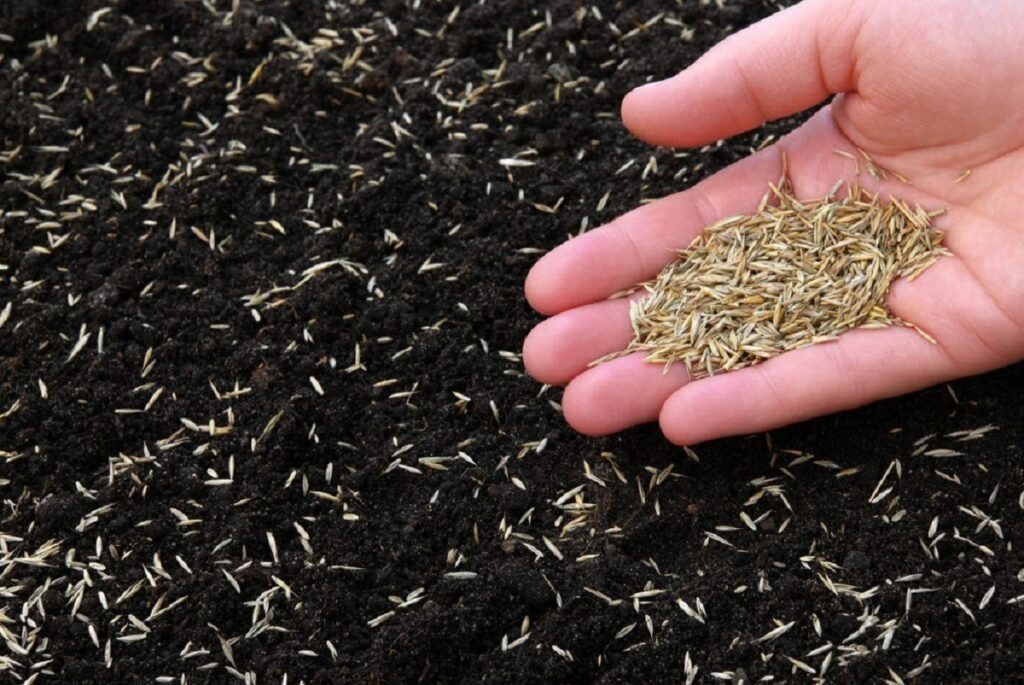Dreaming of a lush, green lawn this summer? With proper preparation and timing, you can achieve a stunning result! Here’s a guide on how to plant grass and care for it so it thrives for years to come.
How to Plant Grass
Step 1: Preparing the Ground

Before you can sow grass seeds, the ground needs to be well-prepared. Start by using a tiller to lightly turn the soil. This helps loosen it and remove any existing vegetation. Next, use a rake to level the soil and remove clumps, weeds, and rocks. This creates a smooth surface for the grass seeds.
After that, add organic soil amendments to enrich the soil and improve its texture. Lightly rake the soil again to mix in the amendments and ensure a smooth, even surface.
Step 2: Sowing the Seeds

With your seedbed ready, it’s time to sow the grass seeds. Scatter the seeds evenly by hand or using a spreader, crossing your paths to ensure even coverage. Once the seeds are spread, roll over the area with a lawn roller to press the seeds into the soil. This step helps ensure good seed-to-soil contact and retains moisture needed for germination.
By following these steps, you’ve laid the foundation for a healthy lawn. Properly preparing the soil is crucial for achieving a vibrant, long-lasting lawn. Taking the time to do this right will reward you with a beautiful yard.
When to Sow Grass
Timing is essential for successful grass sowing. The best times to plant grass are in spring and fall. These seasons provide optimal conditions—moderate temperatures and consistent moisture—for seed germination.
The soil should be warm enough, at least 50°F (10°C), to encourage seeds to sprout. In colder regions, aim to sow grass between April and late June. In milder climates, the window extends from early March to mid-May.
In northern areas, early September to mid-November is ideal. Regardless of your location, spring and fall are generally the best seasons for sowing grass.
Grass Growth Timeline
Sowing grass is a process that requires patience. Several factors influence the growth rate, including soil temperature and moisture levels. Typically, you’ll see the first signs of grass sprouting between 6 to 8 days after planting. The grass will be ready for its first mowing about two to three weeks later.
If you sow in the fall, wait until spring for the first mow to ensure the young grass is strong enough. The early months are crucial as the lawn starts to establish itself. Depending on your lawn’s size, achieving full coverage can take time, sometimes even years. Be mindful not to walk on young grass to avoid damage.
Longevity of Your Lawn
The lifespan of a lawn depends on the care it receives. Well-maintained lawns, with regular mowing, watering, and fertilizing, will last longer. Consistent care keeps your grass healthy and green year-round. Whether you hire a professional or do it yourself, proper lawn maintenance is key to longevity.
By preparing the soil correctly and sowing at the right time, you’ll set the stage for a robust and beautiful lawn. With regular care and attention, you can enjoy a verdant yard for many years.






